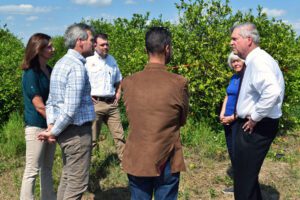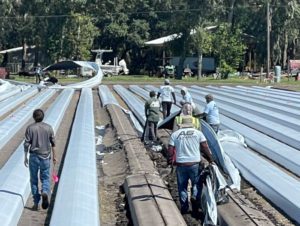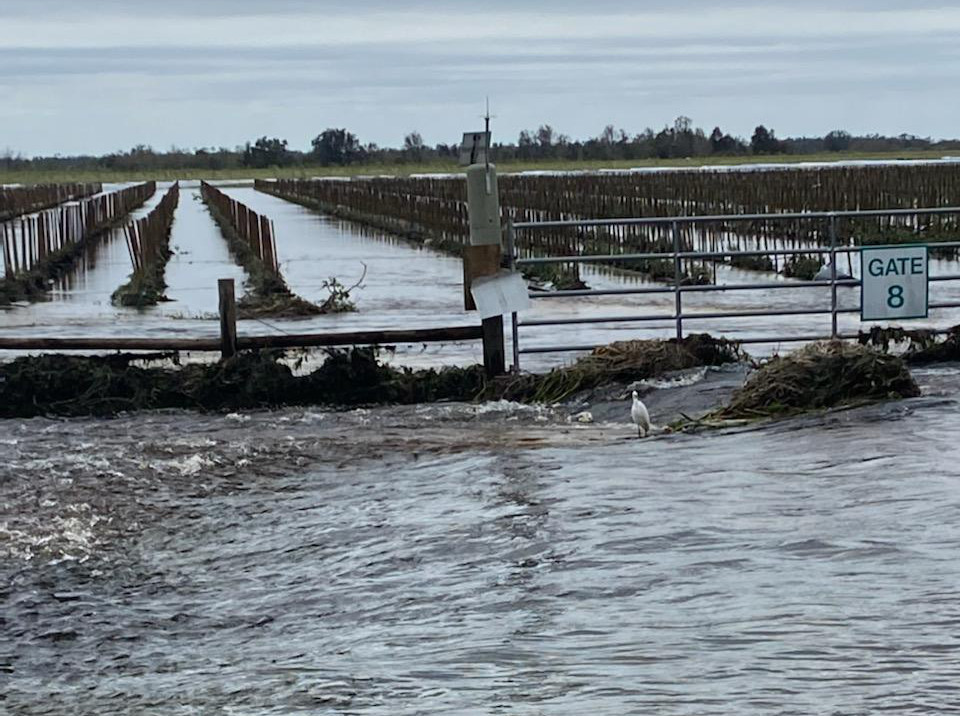Mar 15, 2023Hurricane Ian disaster assistance available to Florida growers
Agriculture Secretary Tom Vilsack recently visited Florida production sites to survey the impact of Hurricane Ian and meet with producers affected by the storm.
During the visit, the Secretary highlighted efforts by the U.S Department of Agriculture to help Florida producers rebuild their operations and increase their bottom lines as they recover from the devastating impact of hurricanes.
While Vilsack visited Florida citrus groves, the state’s growers also grow strawberries, tomatoes, sweet corn, peppers, cucumbers, squash, melons and other vegetables, which also suffered damage in the storm which made landfall in Florida in late September 2022, at the start of of Florida’s fall harvesting.

“We know how devastating storms can be to the operations of farmers and ranchers,” Vilsack said in a news release. “USDA is committed to helping producers impacted by severe weather recover and will use all the tools we have to ensure that producers can rebuild and continue to do what they do best by feeding our nation and the world.”
USDA is working through nearly 2,500 requests for assistance following Hurricane Ian. The department has hosted more than 16 outreach events specifically for Hurricane Ian disaster assistance programs to assist producers and organizations.
The USDA has provided assistance to producers through the Risk Management Agency (RMA) and Natural Resource Conservation Service. The Farm Service Agency (FSA) has authorized policy exceptions for three key disaster assistance programs to aid Florida agricultural operations that were significantly impacted by Hurricane Ian in 2022. The programs include the Emergency Assistance for Livestock, Honeybees, and Farm-Raised Fish Program (ELAP), Livestock Indemnity Program (LIP) and Tree Assistance Program (TAP).

Florida producers received more than $190 million in Federal crop insurance payments as a result of Hurricane Ian with $134 million arriving within weeks due to the hurricane policy, which automatically triggers a payment if a county qualifies based on data from the National Hurricane Center at the National Oceanic and Atmospheric Administration. RMA manages the Federal Crop Insurance Corporation (FCIC) to provide crop insurance products, including the hurricane policy, to farmers and ranchers.
The Emergency Watershed Program (EWP) offers technical and financial assistance to help local communities relieve imminent threats to life and property caused by floods, fires, windstorms and other natural disasters that impair a watershed. Following Hurricane Ian, nearly 300 sites have been identified for EWP assistance and preliminary estimates exceed $50 million.
The Environmental Quality Incentives Program Emergency Assistance (EQIP) provides financial and technical assistance to agricultural and forest producers to improve or protect natural resource conditions while also improving agricultural operations. NRCS can provide payments, through conservation program contracts for EQIP conservation practices to help agricultural landowners and producers address disaster related resource concerns on their land.
To expedite disaster recovery, NRCS offered early start waivers in EQIP emergency declaration counties to allow commencement of key conservation practices prior to conservation program contract approval. Through EQIP for Hurricane Ian, NRCS has already approved more than $10 million for more than 400 applications.
ELAP provides assistance to owners of livestock, and producers of honeybees and farm-raised fish for feed and death losses due to an eligible natural disaster event. For ELAP, FSA will still accept late-file acreage certifications for honeybees and aquaculture for 2022 with no fee and no field inspection required.
 Aquaculture and honeybee producers will need to provide the local FSA county committee with evidence that the fish, bees or hives existed prior to the qualifying natural disaster event, including proof of feed purchase and purchase of stock.
Aquaculture and honeybee producers will need to provide the local FSA county committee with evidence that the fish, bees or hives existed prior to the qualifying natural disaster event, including proof of feed purchase and purchase of stock.
The Tree Assistance Program provides financial cost-share assistance to qualifying orchardists and nursery tree growers to replant or, where applicable, rehabilitate eligible trees, bushes, and vines lost by natural disasters.
On farmers.gov, the Disaster Assistance Discovery Tool, Disaster Assistance-at-a-Glance fact sheet and Farm Loan Discovery Tool can help producers and landowners determine program or loan options. For assistance with a crop insurance claim, producers and landowners should contact their crop insurance agent. For FSA and NRCS programs, they should contact their local USDA Service Center.

















